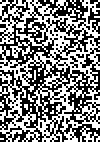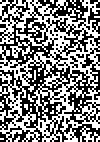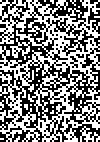Random dot stereogram
Random-dot stereogram (RDS) is stereo pair of images of random dots which when viewed with the aid of a stereoscope, or with the eyes focused on a point in front of or behind the images, produces a sensation of depth, with objects appearing to be in front of or behind the display level.
The random-dot stereogram technique, already known since 1919, was much used by Dr. Béla Julesz and it, along with additional research, lead to publication of an influential[1] book detailing his theories and work on the basis of human stereo vision entitled Foundations of Cyclopean Perception.[2]
Later concepts, involving single images, not necessarily consisting of random dots, and more well known to the general public, are known as autostereograms.
Development
Dr. Julesz emigrated from Hungary to the United States following the 1956 Soviet invasion. After his arrival, he found himself working at Bell Labs, alongside many other great names in mathematics. One of his projects involved detecting patterns in the output of random number generators. Dr. Julesz decided to try mapping the numbers into images and using the pattern-detecting capabilities of the human brain to look for a lack of randomness.[3]
In 1840, Sir Charles Wheatstone developed the stereoscope. Using the stereoscope, two photographs, taken a small horizontal distance apart, could be viewed with the objects in the scene appearing to be 3-dimensional. Over 100 years later, Dr. Julesz noticed that two identical random images similar to what he had produced in his previously mentioned project, when viewed through a stereoscope, appeared as if they were projected onto a uniform flat surface. He experimented with the image pair by shifting a square in the center of one of the images by a small amount. When this pair was viewed through the stereoscope, however, the square appeared to rise out from the page.
Implications
Though interesting on its own as a technique for producing sensations of depth in printed images, the discovery also had implications in cognitive science and the study of perception.
The random dot stereogram provided insight on how stereo vision is processed by the human brain. According to Ralph Siegel, Dr. Julesz had "unambiguously demonstrated that stereoscopic depth could be computed in the absence of any identifiable objects, in the absence of any perspective, in the absence of any cues available to either eye alone."[3]
Dr. Julesz termed this 'cyclopean perception' based on his theory that the brain forms a single-image mental model of a scene, as a Cyclops would, but with depth information added, despite receiving two disparate images from the eyes. His theories and work are detailed in his 1971 book.[2]
Random dot stereotests
There exist several types of random dot stereotests. The stereoacuity is measured from the patient's ability to identify forms from random dot backgrounds, as presented on several plates or pages of a book.
Randot stereotest
The randot stereotest is a vectograph random dot stereotest. It is frequently used for detecting amblyopia, strabismus and suppression, and for assessing stereoacuity. The Randot test can measure stereoacuity to 20 seconds of arc.[4]
The randot stereotest is more sensitive to monocular blur than real depth stereotests such as the "Frisby test".[5]
TNO random dot stereotest
The TNO random dot stereotest (short: TNO stereo test or TNO test) is similar to the randot stereotest but is an anaglyph in place of a vectograph; that is, the patient wears red-green glasses (in place of the polarizing glasses used in the randot stereotest). Like other random dot stereotests, the TNO test offers no monocular clues.[6]
Further developments
Efficiency
Observers' performance in recognizing the figure present in a stereogram in the presence of statistical noise has been found to be higher for a stereogram that consists in black and white dots on a grey background compared to a similar stereogram with only white (or only black) dots on a grey background.[7][8]
Autostereograms
The name 'random dot stereogram' specifically refers to pairs of images based on random dots. Additional work by Christopher Tyler and Maureen Clarke led to encoding the same data into a single image which did not require a stereoscope for viewing. These are known as Single Image Random Dot Stereograms (SIRDS), or Random Dot Autostereograms.[9]
Replacing the random dot base pattern with an image or texture gives the form that made the Single Image Stereogram known to the general public, through the Magic Eye series of books.
Dynamic random dot stereograms
Dynamic random-dot stereograms consist in a moving stereoscopic (cyclopean) form made of moving random dots, camouflaged by further random dots. The observer is to make a perceptual judgment about the shape and/or motion of the dichoptically presented moving form.
When presented with a dynamic random dot stereogram with stereoscopic (cyclopean) motion stimuli,[10] stereoscopic motion is perceived by persons with normal binocular vision and more generally by those who have sufficient binocular vision for the task.
Dynamic random dot stereograms containing binocular motion stimuli can be designed to test whether a subject has at least rudimentary stereopsis. One study found that in strabismic patients a dynamic random dot stereogram yielded a significantly higher rate detection rate for stereopsis than the Titmus fly stereotest.[11]
Illustrated example
The process used to develop the first Random Dot Stereogram is illustrated below.
1. Create an image of suitable size. Fill it with random dots. Duplicate the image.


2. Select a region in one image.


3. Shift this region horizontally by a small amount. The stereogram is complete.


To view the stereogram, focus on a point behind the image by a small amount until the two images "snap" together (![]() ).
Note that viewing the identical images from step 2 in this manner will work, but the whole area will appear at the same depth. The shifted region produces the binocular disparity necessary to give a sensation of depth. Different shifts correspond to different depths.
Another way to view it is to focus on a point in front of the images i.e. make "cross eyes" and force the images to snap together having your left eye focused on the right image and your right eye focused on the left image.
).
Note that viewing the identical images from step 2 in this manner will work, but the whole area will appear at the same depth. The shifted region produces the binocular disparity necessary to give a sensation of depth. Different shifts correspond to different depths.
Another way to view it is to focus on a point in front of the images i.e. make "cross eyes" and force the images to snap together having your left eye focused on the right image and your right eye focused on the left image.
References
- ↑ "Foundations of Cyclopean Perception - The MIT Press". Retrieved 2008-11-16.
- 1 2 Julesz, Béla (1971). Foundations of Cyclopean Perception. Chicago: The University of Chicago Press. ISBN 0-226-41527-9.
- 1 2 Siegel, Ralph (2004-06-15). "Choices: The Science of Bela Julesz". PLoS Biol. 2 (6): e172. doi:10.1371/journal.pbio.0020172. PMC 423145
 .
. - ↑ Stereoacuity testing, ONE Network, American Academy of Phthalmology (downloaded 2 September 2014)
- ↑ N.V. Odell; S.R. Hatt; D.A. Leske; W.E. Adams; J.M. Holmes (April 2009). "The effect of induced monocular blur on measures of stereoacuity". Journal of AAPOS. 13 (2). pp. 136–141. doi:10.1016/j.jaapos.2008.09.005.
- ↑ John A. Pratt-Johnson; Geraldine Tillson (1 January 2001). Management of Strabismus and Amblyopia: A Practical Guide. Thieme. pp. 39–. ISBN 978-0-86577-992-1.
- ↑ Harris J.M.; Parker A. J. (1995). "Independent neural mechanisms for bright and dark information in binocular stereopsis". Nature (374). pp. 808–811.
- ↑ Read, Jenny C.A.; Vaz, Xavier A.; Serrano-Pedraza, Ignacio (2011). "Independent mechanisms for bright and dark image features in a stereo correspondence task" (PDF). Journal of Vision. 11 (12): 1–14. doi:10.1167/11.12.4.
- ↑ Tyler, Christopher; Maureen Clarke (1990). "The Autostereogram" (PDF). Stereoscopic Displays and Applications. Proc. SPIE 1256: 182–197. doi:10.1117/12.19904. Retrieved 2008-11-16.
- ↑ Neff, Robert; Schwartz, Scott; Stork, David G. (1985). "Electronics for generating simultaneous random-dot cyclopean and monocular stimuli". Behavior Research Methods, Instruments, and Computers. 17 (3): 363–370. doi:10.3758/BF03200943. ISSN 0743-3808.
- ↑ Fujikado, T (1998). "Use of Dynamic and Colored Stereogram to Measure Stereopsis in Strabismic Patients". Japanese Journal of Ophthalmology. 42 (2): 101–107. doi:10.1016/S0021-5155(97)00120-2. ISSN 0021-5155.